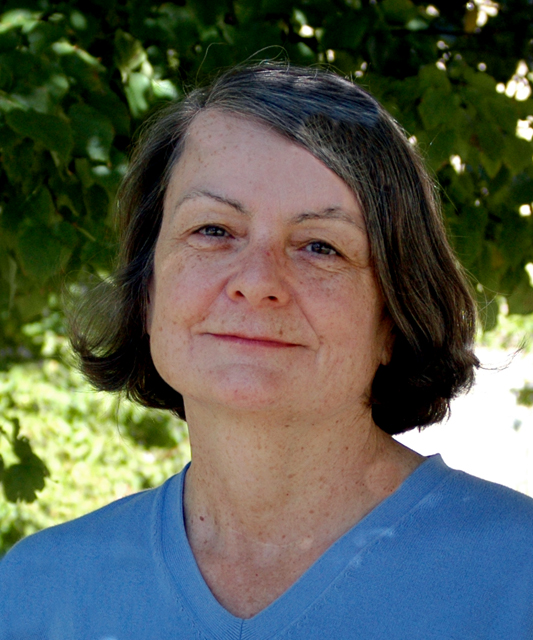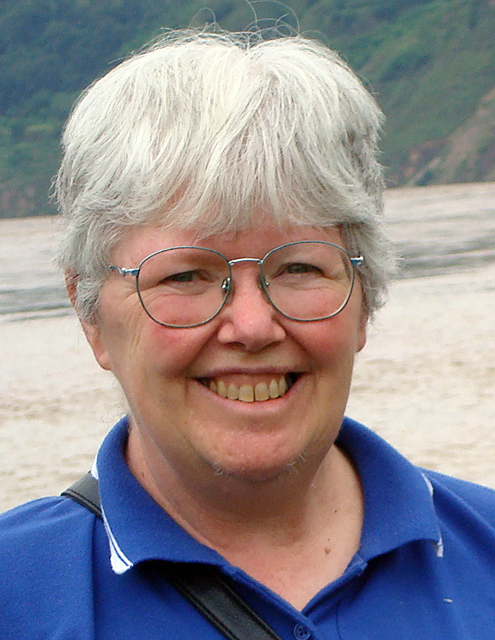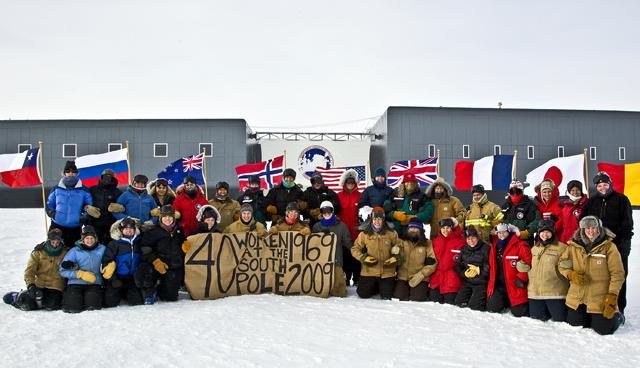|
Page 4/4 - Posted November 13, 2009
A Successful SeasonBy all accounts, the gender experiment proved women could work in the Antarctic. “They did a fairly good job,” Bull says. “They made about the same number of mistakes as four neophyte males would have done — but no more. It was a highly successful little expedition.” Clarke says he doesn’t recall any problems while the women were in McMurdo. “They all stuck together. They had what we called the Mother Hen. She [Jones] was an older woman,” he says. “We told these guys these women were scientists. They were married. Be respectful to them and don’t smart off. As far as I know, there were no problems. They were in the Dry Valleys most of the time. “I think a bigger problem for the admiral was tourists,” he adds. “I think the admiral was more concerned about tourists becoming a problem than women scientists. By the time I left, we had both tourists and women. I guess I was there at an interesting time. It went from what it was in the old days to more of what it is now.” Antarctica todayToday, women account for about a third of the American population in Antarctica. They lead major multimillion-dollar science expeditions, drive heavy equipment on long tractor traverses across hundreds of miles of ice, and serve in key leadership roles throughout an operation that moves 3,000 people to and from the Ice each year. 
Terry Tickhill Terrell

Eileen McSaveney
Pam Hill, a field support coordinator for the USAP, is at McMurdo Station for her 20th season on the Ice. She has seen some amazing changes since her first season working as a shuttle driver in 1985. “As equal opportunity has become the norm versus the exception in America, the same is true for here on the Ice,” says Hill, whose Antarctic résumé includes a stint as winter site manager at the Palmer research facility Both Terrell and McSaveney have fond memories of their 1969 adventure. Says Terrell, “When I left I was absolutely heartbroken, because I loved it there. From the perspective of doing research for the first time. From the perspective of being in that kind of intellectual environment. And from the perspective of being in a beautiful, wild place. There aren’t enough adjectives for beautiful.” McSaveney says Antarctica is always tucked away at the back of her mind. “I have tried to keep up with scientific discoveries related to Antarctica, its geology and climate. And even many decades later, the beat of helicopter blades immediately conjures images of the Valleys.” A few years ago, McSaveney adds, she saw a documentary on television showing people at McMurdo. There were a large number of women working both as scientists and in operational support roles. “It was obviously so commonplace to have women working there that no particular mention of it was made in the commentary,” she says. “That told me that things are now as they should be — and gave me a really warm glow inside.” Additional sources to this story: “The New Explorers: Women in Antarctica” by Barbara Land; Bill Spindler’s invaluable Web site, South Pole Station |



For USAP Participants |
For The Public |
For Researchers and EducatorsContact UsU.S. National Science FoundationOffice of Polar Programs Geosciences Directorate 2415 Eisenhower Avenue, Suite W7100 Alexandria, VA 22314 Sign up for the NSF Office of Polar Programs newsletter and events. Feedback Form |


